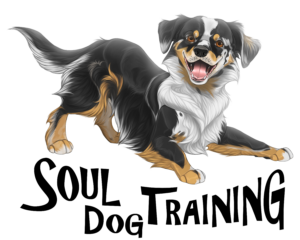Pets and Their People Blog
Is Walking the Dog a Dreaded Chore?
One of the biggest complaints I hear as a trainer is that dogs pull, are reactive toward people, or toward other dogs.
Dog Walking Pro Tips
I have different ways of addressing all of those things, but can give you one hint before your walk with any dog. Wear them out a little before the walk. I love to take them out to the front yard on leash and sprinkle treats around for them to search for. This gets them in a sniffing mood and it is commonly said that 15 minutes of sniffing equals a mile walk for their mental stimulation.

I also love using a flirt pole to take the edge off if they are really big pullers. This activity will wear them out both mentally and physically at the same time. I recommend the Outward Hound Tail Teaser; mine has lasted 5 years with occasional toy changes as squeakers are popped. I use both of these methods to calm down some of the excitement that walks bring about and it usually makes for a much nicer walk.
Always carry treats with you on your walks, the more high value the better, like freeze-dried beef lung, heart or liver. If your dog has allergies, treats from different proteins are readily available in freeze-dried form.
Let’s Talk About Pulling on Walks!
- Buying your dog a good no pull harness with an attachment on both the back and the chest will make a huge difference in your walks. Make sure it is properly fitted and tight enough that it won’t slide around when it is hooked to the chest attachment. Hook the leash to the front attachment and practice walking them around the house. Doing it this way removes any pressure from their throat or chest and they don’t even feel like they are attached to you.
- I like to use a longer leash, 10 foot or longer, on my walks so that the dog can easily sniff without having to pull to show me where they want to go. (In my mind, using a short leash to walk them is akin to having someone breathing down your neck so you walk faster to move away from them.)
- Up your pace and walk a bit faster for them; use a long leash attached to the chest; and most importantly let them sniff!
The walk isn’t about how many steps you are going to get, it is about letting them explore the outside world and use their magnificent noses.
Walking Reactive Dogs
For reactive dogs, the treats come into play. If they are horribly reactive to everything they see, put them in the car and drive them to the nearest cemetery. I find that it makes for a very relaxing walk for both of us. Removing the triggers helps to keep them calm and focus on sniffing. If you do encounter a trigger, move away to a comfortable distance for the dog where they stop barking. Let them see the trigger and drop those high value treats on the ground. If they are yummy enough, your dog will keep an eye on what is going on but focus on you and the treats.
If you want to really work on reactivity, contacting your local Pet Professional Guild dog trainer or behavior consultant for help will be the fastest route to results. You can search for trainers in your area here: https://www.petprofessionalguild.com/Zip-Code-Search
About the Author

Claire Clark is the owner of Soul Dog Training in the St. Louis Metropolitan area. She has been a trainer for six years and is the only accredited trainer in the Trust Centered Training method in the state of Illinois. Thinking outside the box to problem solve when dealing with behavior cases and rescue dogs is her specialty. She offers customized, in-home, private lessons so she can best help you with your specific needs.
